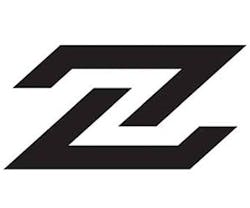The lighting industry is used to working with standardized light sources – for example, the familiar screw-base Edison incandescents or tube-shaped T8 linear fluorescents.
But unlike other lighting types, LED technology doesn’t yet have an industry standard. Each manufacturer is left to create its own separate proprietary system, resulting in a market full of significantly different luminaires that you can’t easily swap out when an upgrade or replacement is necessary.
However, the Zhaga Consortium, a global specifications development organization including over 200 manufacturers and lighting professionals, has set out to change that.
The Push for Interchangeability
Zhaga aims to fill the gap in the marketplace by developing voluntary interface standards for LED light source developers. Founded in 2010, the organization targets only the light engine – the LED module itself plus the driver that controls it – and its mating surfaces on the luminaire.
Luminaires bearing the Zhaga mark are certified to meet the organization’s requirements, indicating that end users can use replacement light engines from any manufacturer bearing the same mark.
“LED technology continues to evolve, and Zhaga doesn’t want to discourage manufacturers from doing better things inside the light engine,” explains Ben Swedberg, business unit manager for engineered solutions for Ideal Industries, a Zhaga member. “The interfaces need to be fixed and can’t change, but we don’t want to tell manufacturers what they can do inside the light engine because we want the technology to continue to grow.”
The organization develops specifications for each application, from downlighting to streetlights and ambient lighting. Each set provides standardized requirements for five common interfaces:
- Mechanical: Dimensions, fit, physical size
- Photometrical: Light distribution, color, lumen output, beam shape
- Thermal: Thermal resistance, heat dissipation, and other thermal behavior factors
- Electrical: Power, electrical connection points, insulation
- Control: Behavior when coupled with common existing controls, such as dimmers
PageBreak
How It Works
So far, Zhaga has released the first seven sets of standards, or books, covering a handful of lighting applications. The organization will continue to polish the standards as they receive feedback. Eventually, the organization plans to enlist a standards body such as IEC to maintain the finished books over the long term while Zhaga develops new standards for additional lighting applications.
Manufacturers can test their products according to one of the current books by partnering with one of only a few independent labs approved to evaluate Zhaga compliance.
The first round of testing concluded in spring 2012, resulting in certification for several LED modules and one complete luminaire, the IRiS P3LED downlight by Cooper Lighting, a founding member of the Consortium.
Providing at least 80 CRI and a color temperature of 3000K, the 3-inch luminaire can be replaced with any Book 3-compliant array featuring 9-millimeter LEDs without changing the heat sink or reflector.
“The use of interchangeable LED light engines enables an upgrade path, effectively future-proofing the luminaire and protecting the investment in LED technology,” explains Steven Pyshos, marketing manager for recessed products at Cooper Lighting. “Interchangeability builds confidence, accelerates adoption rates, and drives cost down.”
What’s Next?
Books for additional applications are likely, with at least some focus dedicated to linear applications, Swedberg says. The specifications are expected to gain steam as they earn market visibility and acceptance, though some suppliers and manufacturers will “push proprietary designs in an attempt to lock up market share while others embrace open standards,” Pyshos predicts. “There is room for both.”
Eventually, low-cost LED products that leverage highly optimized design and can be produced in high volumes will deliver “good enough performance at low costs,” Pyshos adds, noting that these luminaires will likely be replaced at the end of life. Long-lasting specification-grade luminaires, on the other hand, will benefit from the upgrade path enabled by the emerging standards.
“The projected life of the light engine is very long, while the pace of LED performance improvements is very rapid,” says Pyshos. “Based on the strides solid state lighting has made just in the past three years, it’s exciting to project how good the efficiency, color quality, and lumen maintenance will be in the years to come – all the more justification for a common interface to enable an upgrade path.”
Janelle Penny ([email protected]) is associate editor of BUILDINGS.
About the Author
Janelle Penny
Editor-in-Chief at BUILDINGS
Janelle Penny has been with BUILDINGS since 2010. She is a two-time FOLIO: Eddie award winner who aims to deliver practical, actionable content for building owners and facilities professionals.

